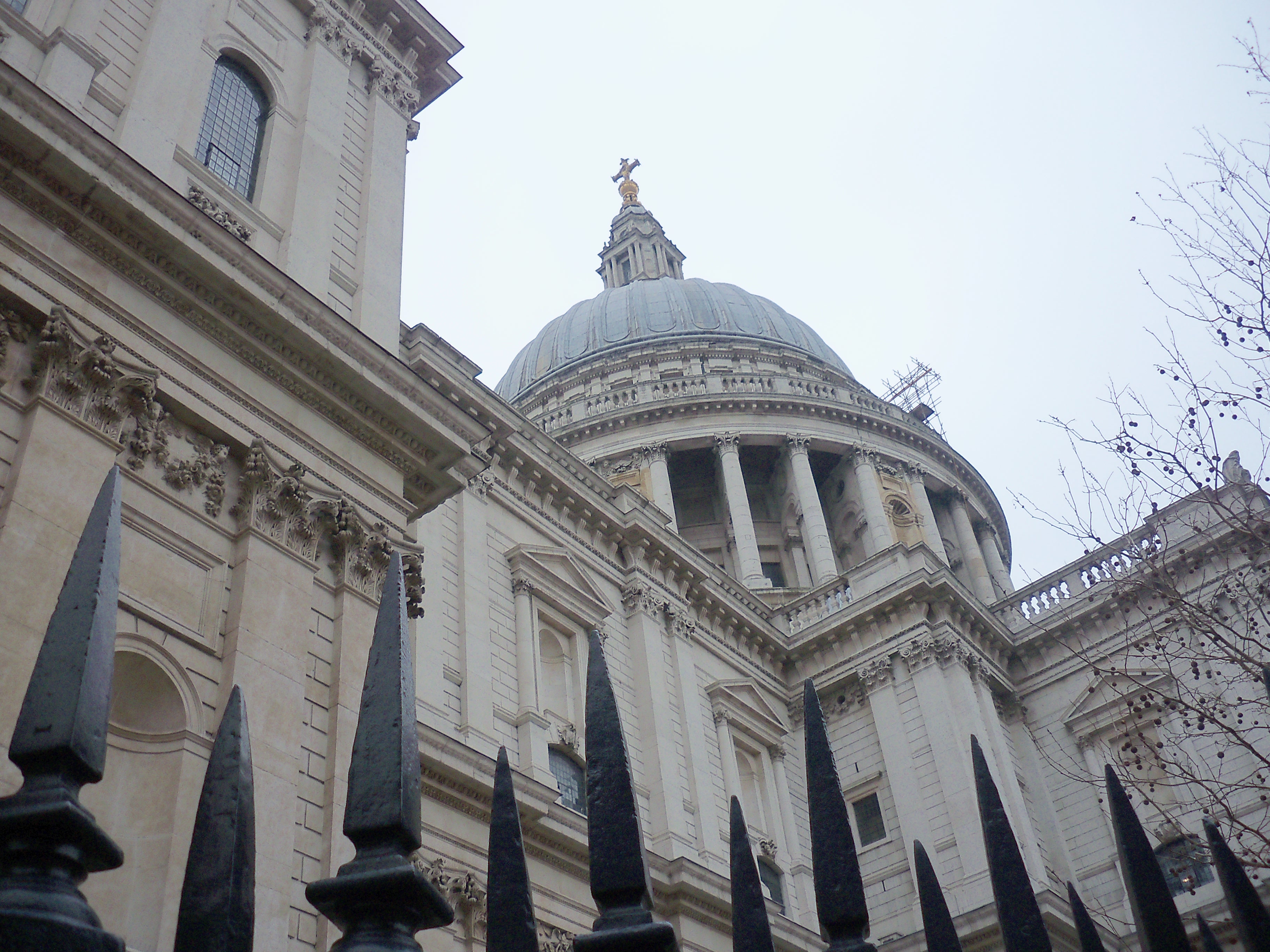Portland Stone

|
| St Paul’s Cathedral. |
Portland Stone is a type of limestone that is commonly used in the construction of traditional buildings in the London area.
Limestone is a sedimentary rock formed during four geological eras: Cretaceous, Jurassic, Permian and Carboniferous, 70 – 345 million years ago. It consists of calcium carbonate, and is formed by the compaction of calcite, primarily from marine organisms, at the bottom of shallow lakes and seas. The presence of marine organisms and other fossil inclusion is often noticeable in limestone. Due to the presence of a variety of minerals, limestone also presents numerous colours, ranging from light grey Portland Stone, to creamy Bath stone and dark grey Purbeck stone.
Portland Stone was formed at the end of the Jurassic period, approximately 145 million years ago. It has been quarried on the Isle of Portland in Dorset since Roman times, and has been used as a building material in London since the 14th century, when it was used in the construction of the Palace of Westminster, the Tower of London and London Bridge. St Paul’s Cathedral, designed by Sir Christopher Wren, was built from Portland Stone, establishing it as the stone of choice for London. During the 19th and early 20th centuries Portland Stone, became popular for building banks, civic buildings and educational establishments, many of which were in the classical style.
It is strong, durable, resistant to weathering, easy to work and carve and can be used for masonry walls, cladding, columns, plinths, flooring, paving, mouldings, sculptures, fireplaces and so on. There are a number of different varieties of Portland Stone, with different appearances, properties and recommended uses depending on the bed that it has been extracted from. These include:
- Bowers Basebed.
- Bowers Roach.
- Fancy Beach Whitbed.
- Grove Whitbed.
- Jordans Basebed.
- Jordans Whitbed.
- Ostrea Patch Reef Whitbed.
[edit] Related articles on Designing Buildings Wiki
- Choosing stone.
- Defects in stonework.
- Finding stone to conserve historic buildings.
- Inspecting stone sample panels.
- Iraq, Afghanistan, Gulf War Memorial.
- Julian Opie Art Wall CitizenM Tower of London Hotel.
- Kentish ragstone.
- Limestone.
- Modern Stonemasonry.
- Sourcing stone to repair Exeter Cathedral.
- Stone dressing.
- Sustainable stone.
- Two New Ludgate Portland Stone Feature Wall.
- Types of stone.
- Use of Stone in Monks Lantern Weybridge.
Featured articles and news
The benefits of engaging with insulation manufacturers
When considering ground floor constructions.
Lighting Industry endorses Blueprint for Electrification
The Lighting Industry Association fully supports the ECA Blueprint as a timely, urgent call to action.
BSRIA Sentinel Clerk of Works Training Case Study
Strengthening expertise to enhance service delivery with integrated cutting-edge industry knowledge.
Impact report from the Supply Chain Sustainability School
Free sustainability skills, training and support delivered to thousands of UK companies to help cut carbon.
The Building Safety Forum at the Installershow 2025
With speakers confirmed for 24 June as part of Building Safety Week.
The UK’s largest air pollution campaign.
Future Homes Standard, now includes solar, but what else?
Will the new standard, due to in the Autumn, go far enough in terms of performance ?
BSRIA Briefing: Cleaner Air, Better tomorrow
A look back at issues relating to inside and outside air quality, discussed during the BSRIA briefing in 2023.
Restoring Abbotsford's hothouse
Bringing the writer Walter Scott's garden to life.
Reflections on the spending review with CIAT.
Retired firefighter cycles world to raise Grenfell funds
Leaving on 14 June 2025 Stephen will raise money for youth and schools through the Grenfell Foundation.
Key points for construction at a glance with industry reactions.
Functionality, visibility and sustainability
The simpler approach to specification.
Architects, architecture, buildings, and inspiration in film
The close ties between makers and the movies, with our long list of suggested viewing.
SELECT three-point plan for action issued to MSPs
Call for Scottish regulation, green skills and recognition of electrotechnical industry as part of a manifesto for Scottish Parliamentary elections.
UCEM becomes the University of the Built Environment
Major milestone in its 106-year history, follows recent merger with London School of Architecture (LSE).
Professional practical experience for Architects in training
The long process to transform the nature of education and professional practical experience in the Architecture profession following recent reports.






















